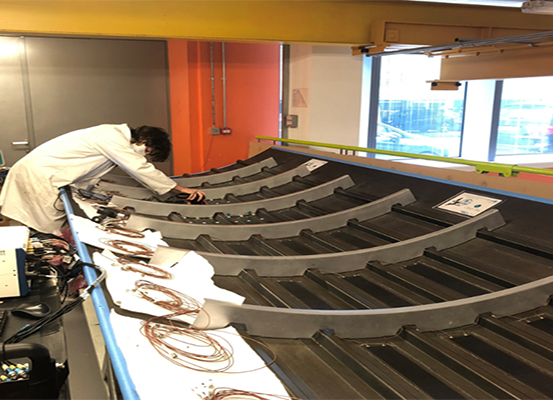The team successfully designed, developed, and tested five demonstrators including 5m curved fuselage panels, window frames, floor beams, aft pressure bulkhead, and fittings incorporating SHM technologies.
The additional cost of integrating the SHM technology into composite structures is still being examined, using Clean Sky’s ongoing MASCOT (Modular multilevel cost Analysis Software for COmposite smarT fuselage) program. “You’re adding sensors to the composite structure, so you’re adding weight, which means either less payload or more fuel. You have to balance that over the life of the aircraft against the reduction in the direct operating and maintenance costs,” explained Ferri Aliabadi, SHERLOC program topic manager, Zaharoff professor of aviation, and the former head of aeronautical at Imperial College London.
Summarizing the benefits of the SHM, Professor Aliabadi said, “You can monitor the health of the structure remotely; without the need to ground the plane, and send maintenance engineers inside the aircraft, which incidentally, during maintenance, presents the danger of causing accidental damage to the airframe.”


